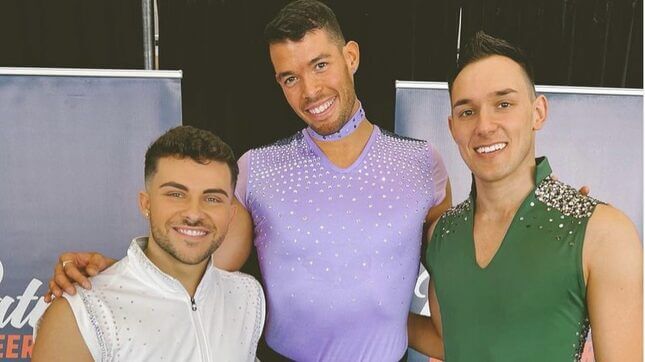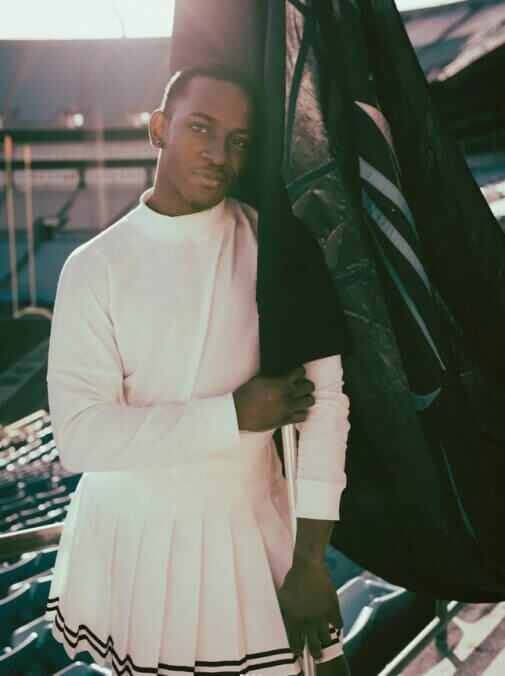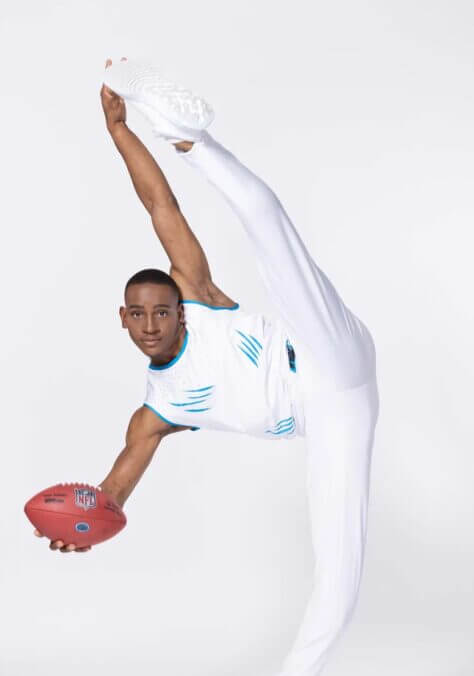Male NFL Cheerleaders Are Starting to Dress for Themselves
They're ditching bland athletic apparel for sequins, chokers and eyeshadow, challenging heteronormativity on and off the field.
In Depth

The football field is perhaps the last place one might expect to see a male athlete in a bedazzled lavender top with a matching choker. But as the NFL cheerleading audition season kicks off, the boys are back on the sidelines and sparkling—literally!—like never before.
Being a male cheerleader in the NFL is no longer rare. Only a handful of teams, including the Dallas Cowboys Cheerleaders and the Raiderettes, have maintained their all-woman status, and several teams have even shifted away from their old, gendered team names (the Saintsations became the Saints Cheer Krewe and the SeaGals became the Seahawks Dancers, to name a couple). But while male cheerleaders have largely been expected to sport bland athletic apparel, closer to the players’ unembellished Nike warm-ups than the sequined glamour of the women cheerleaders, the men of NFL cheer are now pushing the limits of how LGBTQ+ people can express themselves in an arena where open queerness—or the ability to challenge gender norms at all—is exceedingly rare.

Dylon, a current professional cheerleader whose last name we can’t use because he’s in the process of re-auditioning for a team, told Jezebel in a phone interview that he plans to wear an all-black, fitted, and sleek outfit to this year’s upcoming tryouts—a massive departure from the jogger pants and t-shirts he’s worn in years past. “I am a very outgoing, flashy person with my personality, and I want my tryout outfit to speak to that,” he said. “My outfits used to be very tame, because I wasn’t sure what I needed to wear at that point. As a male dancer going into a female-dominated industry, I didn’t want to be too much, and I didn’t want to take away from what women had created.”
In 2018, the Los Angeles Rams made history when they hired the first two male cheerleaders in the NFL, who were also Black and members of the LGBTQ+ community (disclosure: I was a Rams cheerleader when the men joined the squad). They went on to perform the same choreography as the women. The move might sound unremarkable, given that high school and collegiate cheerleading teams have long included men. Where fans have come to expect bronzer-dusted cleavage and hair teased to the heavens, the mere existence of a cis man performing overtly sexualized choreography in the hyper-feminine world of NFL cheerleading was groundbreaking.
-

-

-

-

-

-

-

-

-

-

-

-

-

-

-

-

-

-

-

-

-

-

-

-

-

-

-

-

-

-

-

-

-

-

-

-

-

-

-

-









































